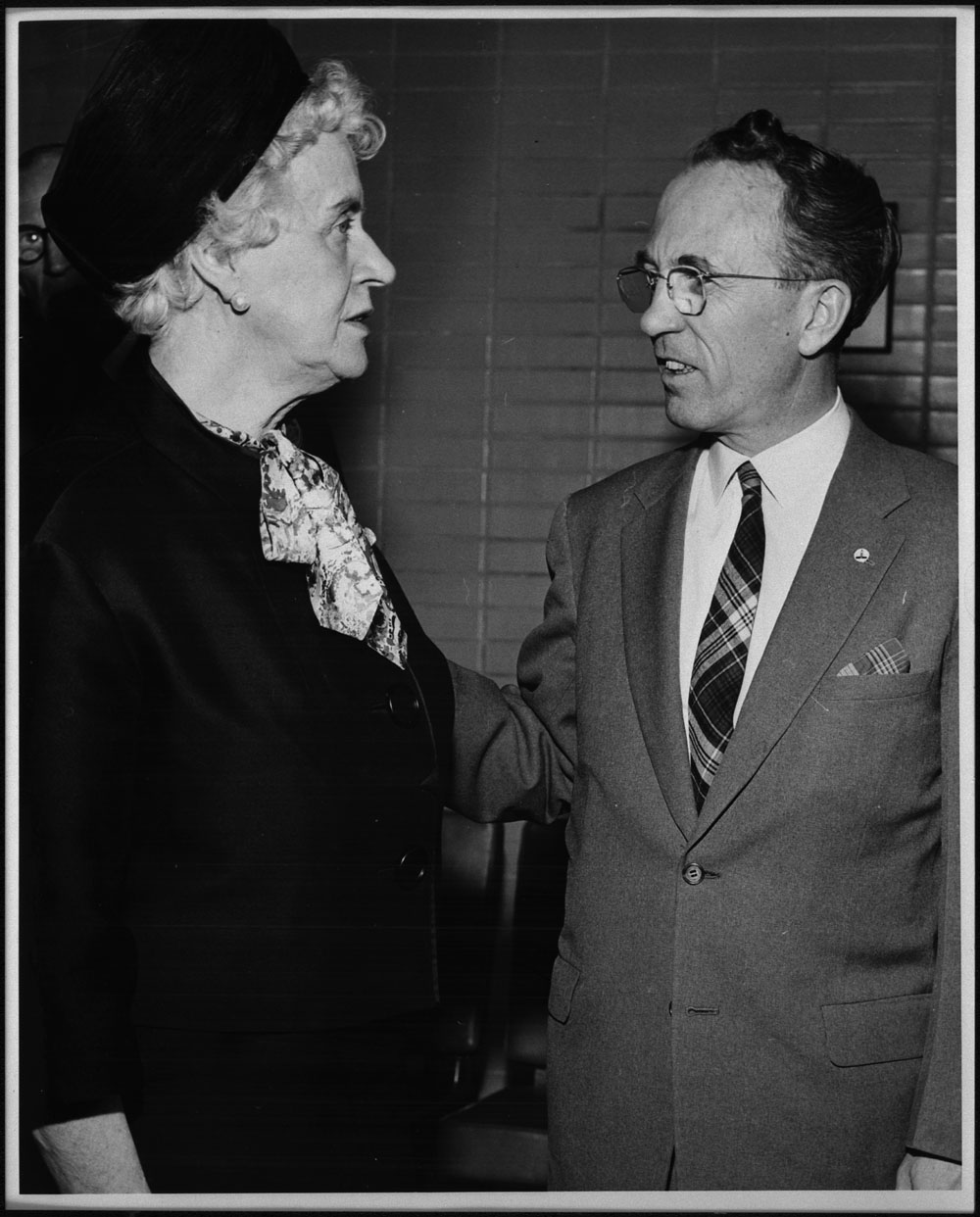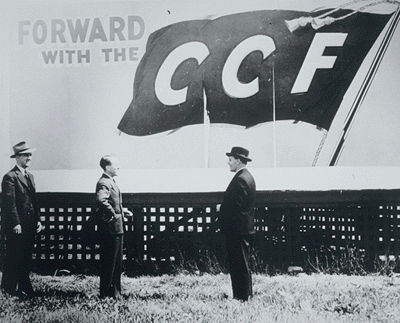The Saskatchewan Bill of Rights came into force on 1 May 1947. Written primarily by lawyer and human rights advocate Morris Shumiatcher, it was enacted by the CCF government led by Premier Tommy Douglas. While critics have debated its efficacy, it remains important because it was Canada’s first bill of rights; it predated the Canadian Bill of Rights (1960), Quebec’s Charter of Human Rights and Freedoms (1975) and the Canadian Charter of Rights and Freedoms (1982).

Historical Background
Civil rights are guarantees of non-discriminatory treatment that can be expected by citizens regardless of their race, religion, ethnicity, gender or other characteristics. A bill of rights is a list of those guarantees. The British North America Act, the foundational piece of Canada’s constitution, did not contain a bill of rights because Canada’s founders believed in the power of British common law. That is, they agreed that civil liberties exist naturally and so do not need be granted or listed.
The Second World War changed many Canadians’ thoughts about rights. The rise of fascist states in Europe, which culminated in the murder of 6 million Jews and 5 million non-Jews in the Holocaust, had demonstrated a need to more explicitly protect citizens. A similar lesson was learned when Prime Minister William Lyon Mackenzie King’s government used the war to justify suspending rights, taking unprecedented control of the economy and interning Japanese Canadians. ( See Internment of Japanese Canadians.)
Background in Saskatchewan
In postwar Saskatchewan, like the rest of Canada, new ideas about civil rights conflicted with laws and practices that for decades had discriminated against anyone who was not White and male. Segregated churches, restaurants, theatres and more existed in Saskatchewan and communities across Canada. (See Residential Segregation in Canada.)
In the June 1944 Saskatchewan election, the Co-operative Commonwealth Federation (CCF) won 47 of the province’s 52 seats. CCF leader Tommy Douglas became premier. Shortly after taking office, Douglas appointed lawyer and human rights advocate Morris Shumiatcher to be Saskatchewan’s Law Officer under Attorney General J.W. Corman. As a Jewish man, Shumiatcher had experienced anti-Semitic hatred and discriminatory laws and practices. He understood that racism and bigotry were systemic problems. Douglas, Corman and Shumiatcher agreed that discrimination could be addressed and Saskatchewan’s citizens well served if the province had a bill of rights.

Shumiatcher consulted with many people and groups including the Canadian Jewish Congress and the Commission of Law and Legislation of the American Jewish Congress. He later wrote that he hoped a bill of rights would “lay the foundation for a better society — not only in Saskatchewan but throughout Canada.”
In March 1947, Attorney General Corman rose in the Saskatchewan legislature to introduce and move the adoption of The Saskatchewan Bill of Rights Act, 1947. Corman said, “I would suggest, Mr. Speaker, that this is perhaps the most important bill that ever came before this house… in importance, it will rank with the British North America Act.” After vigourous debate, the bill passed unanimously. The Saskatchewan Bill of Rights came into force on 1 May 1947.
Key Provisions and Protections
The Saskatchewan Bill of Rights contains 19 sections. It states that “every person and every class of persons” is guaranteed the freedom of expression and association; the right to vote; the right to join a professional organization and union; and the freedom from arbitrary imprisonment. Other clauses state that it is illegal to discriminate against “any person or class of person” when renting or purchasing property; receiving education in schools and universities; and being served in public places such as restaurants and hotels.
The Bill states that the Crown and every servant and agent of the Crown is bound by the Bill of Rights; meaning that all politicians, civil servants, lawyers, judges and police officers must respect its provisions. It also states that anyone who violates the Bill’s provisions by denying a citizen’s rights will be subject to fines, penalties or imprisonment.
The Bill of Rights is limited only by clauses stating that religious-based schools may still hire personnel of a certain religion or creed. It also says that nothing in the Bill of Rights should restrict freedom of speech.
Criticisms
While its passage was unanimous and lauded by many, the Saskatchewan Bill of Rights did have its critics. A bill of rights can be statutory or entrenched. A statutory bill of rights, like the Saskatchewan Bill of Rights, exists as a law. An entrenched bill of rights, on the other hand, is part of a constitution. Scholars argued that to be truly effective, a bill of rights should be entrenched because a law can be changed much easier than a constitution.
Other critics argued that both statutory and entrenched bills of rights weaken democracy because they afford courts the power to limit or override the wishes of elected governments. Those opposed to the Saskatchewan Bill of Rights expressed both arguments; some said it was too weak because it was only a statutory bill of rights, while others said it was too powerful because it shifted power to the courts. Historian Carmela Patrias has argued that the Saskatchewan Bill of Rights was ineffective because it was initiated by the government rather than having been demanded by a grassroots movement. Patrias has also pointed to “the failure to test its provisions in the courts” — the fact that no court cases have referenced the Saskatchewan Bill of Rights — as evidence of the bill’s limited efficacy.
Significance
Despite its critics and limited efficacy, the Saskatchewan Bill of Rights remains important because it was the first of its kind in Canada. It was a year later that the United Nations adopted the Universal Declaration of Human Rights — co-written by Canadian John Humphrey. It was 13 years later, in 1960, that the government of John Diefenbaker created the Canadian Bill of Rights. It was not until 1982 that the rights of all Canadian citizens were entrenched when the Charter of Rights and Freedoms became a part of Canada’s constitution.
See also Rights Revolution in Canada; Human Rights; Philosophy of Human Rights; Canadian Human Rights Commission; Canadian Human Rights Act; Canadian Museum for Human Rights.

 Share on Facebook
Share on Facebook Share on X
Share on X Share by Email
Share by Email Share on Google Classroom
Share on Google Classroom



